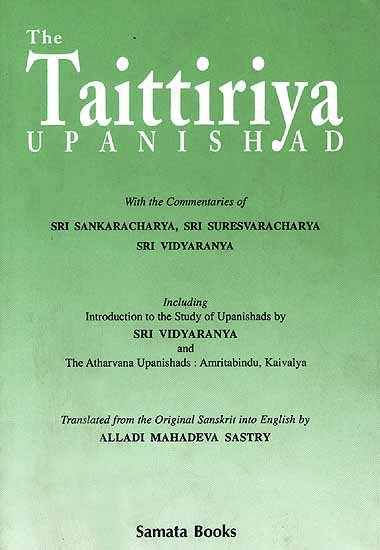Taittiriya Upanishad Bhashya Vartika
by R. Balasubramanian | 151,292 words | ISBN-10: 8185208115 | ISBN-13: 9788185208114
The English translation of Sureshvara’s Taittiriya Vartika, which is a commentary on Shankara’s Bhashya on the Taittiriya Upanishad. Taittiriya Vartika contains a further explanation of the words of Shankara-Acharya, the famous commentator who wrote many texts belonging to Advaita-Vedanta. Sureshvaracharya was his direct disciple and lived in the 9...
Verse 2.276-277
Sanskrit text and transliteration:
प्राणानां तत्प्रतिष्ठानादात्माऽसौ श्रुतितो भवेत् ।
पृथिवी देवता पुच्छं सैषेति श्रुतिदर्शनात् ॥ २७६ ॥
असोराध्यात्मिकस्यैषा स्थितिहेतुः प्रकीर्तिता ।
अन्नात्मनीवेहाप्याह श्लोकं प्राणमयात्मनि ॥ २७७ ॥
prāṇānāṃ tatpratiṣṭhānādātmā'sau śrutito bhavet |
pṛthivī devatā pucchaṃ saiṣeti śrutidarśanāt || 276 ||
asorādhyātmikasyaiṣā sthitihetuḥ prakīrtitā |
annātmanīvehāpyāha ślokaṃ prāṇamayātmani || 277 ||
English translation of verse 2.276-277:
This (samāna) is the self as known from another śruti text, because the five vital airs abide therein. The deity of the earth is the tail. Since it is said in the śruti text, “That deity which is in the earth...”, this (deity in the earth) is said to be the cause of the stability of the vital force of the individual. As in the case of the self formed of food, here also the (following) verse is quoted in respect of the self formed of the vital force.
Notes:
The samāna aspect of the vital force which is called ākāśa is represented as the self (ātmā) in the śruti text when it says ākāśa ātmā. Prāṇa and other aspects of the vital force rest on samāna as stated in the Bṛhadāraṇyaka (III, ix, 26). The body and the heart, it is first of all stated here, rest on prāṇa. Then prāṇa is said to rest on apāna which, again, is said to rest on vyāna. To the question, “On what does the vyāna rest?” the answer is given that vyāna rests on udāna. And finally udāna is said to rest on samāna. It is this Bṛhadāraṇyaka passage that is referred to in the verse in support of the view that all the vital airs abide in samāna. Samāna is represented as the self as it were, because it is the abiding place of the functions of the vital force and also because it is in the middle place when compared with the other functions which are in the periphery. It is usual to refer to the middle or the trunk of an organism as the self.
After explaining that ākāśa, i.e., the samāna aspect of the vital force, is the self of the prāṇamaya-kośa, śruti says that “the earth is the tail, the support” (pṛthivī puccham pratiṣṭhā). Pṛthivī here means the deity of the earth (pṛthivī devatā). That the deity of the earth is the stabilising factor of the vital force is brought out in the Praśna Upaniṣad (III, 8): “The deity that is in the earth favours by attracting (keeping under control) apāna of a human being.”
At the end of the first anuvāka reference was made to the verse dealing with the nature of the self made of food which occurs at the commencement of the second anuvāka. Here also reference is made to the verse relating to the self made of the vital force, which occurs at the commencement of the third anuvāka.
